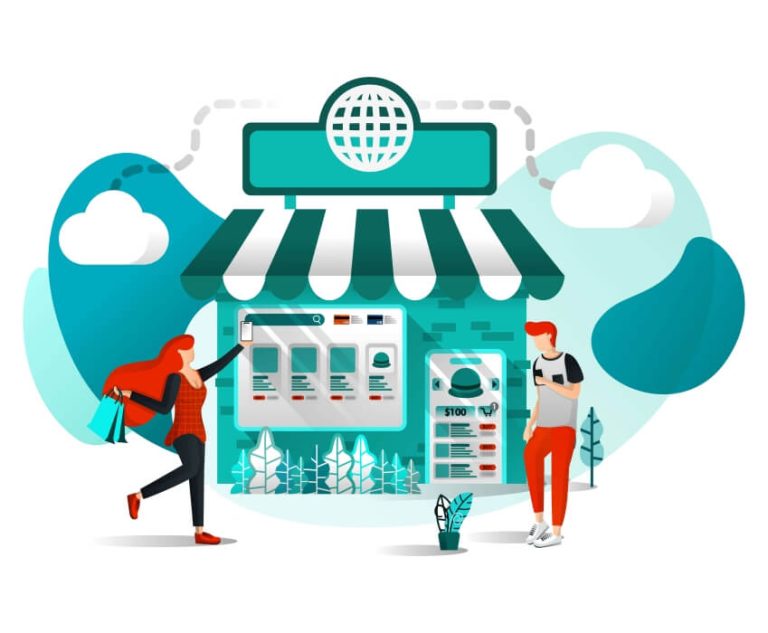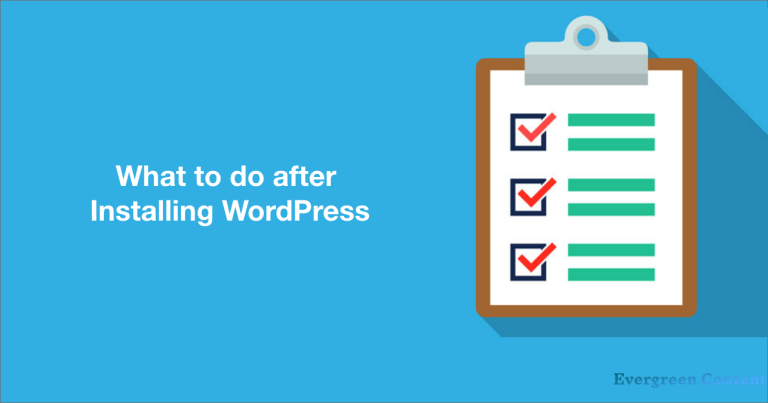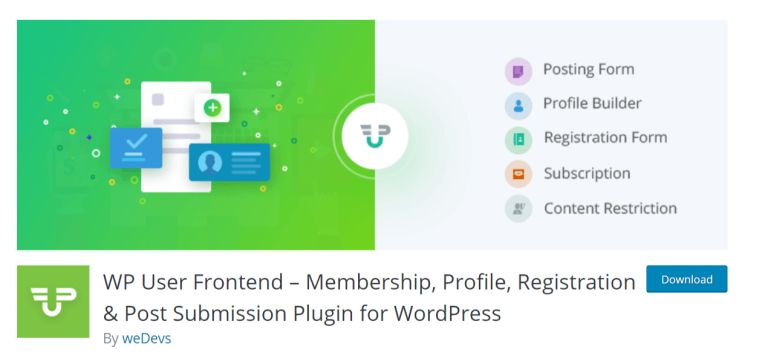Debugging the Myths Around Digital Marketplaces When Getting Started
At a post-pandemic time when many high-street fashion stores and retail malls are struggling to sustain themselves, marketplaces are growing at a high rate worldwide. Though there are several use cases of successful marketplaces, most people don’t understand the full potential of the marketplace platform model.
Marketplace platforms cater to the needs of both B2B companies and retailers. But some businesses have prejudice about marketplaces since they’re unsure about how marketplaces can help them upscale their business with third-party sellers. In this article, we tried to shed light on the basics of marketplaces and bust the myths around marketplaces. By the end of this article, you’ll also know the things to consider when getting started with marketplaces.
What Is a Marketplace?
Before moving to further discussion, let’s learn briefly what a marketplace is. A digital marketplace is an online platform where an operator who runs the marketplace platform brings together buyers and sellers and facilitates transactions between them.
There are three entities in a marketplace.
- The operator hosts the marketplace platform and manages the sellers. The operator can also sell his own products through the marketplace.
- The third-party sellers themselves generally hold inventory and fulfill orders.
- The buyers or consumers who buy from the multi-vendor marketplace and get their products shipped to their destinations.
All three of these entities get benefits out of the marketplace. The buyers get a broader selection of products at competitive prices and can save on shipping costs. The sellers get access to new markets for customers without the complexity and cost of setting up their own eCommerce storefront. And the operators gain the ability to provide a better experience to their customers and get a new revenue stream by receiving commissions for each sale made through the platform.
The Era of Marketplace
The 21st century has seen the rise of internet-enabled services. Marketplaces also experienced unprecedented growth during the past couple of years. Let’s have a look at how marketplaces have been gaining momentum over the years.
Marketplace Concept Is Not New
The concept of the marketplace is not new. People from the ancient age also used to gather at a common place where both buyers and sellers used to meet and exchange goods. The origin of marketplaces dates back to 3000 BC in the Middle East from where the concept spread to other parts of the world. Marketplaces were called by many names like Bazar, Souk, Mercado, etc. in different regions.
The idea was simple then. Marketplaces brought together buyers and sellers, typically from a local community or a village at one place to trade all goods and services required for sustenance. These marketplaces were usually monitored and regulated by a central authority. This old concept has been evolving over the centuries and has taken today’s shape.
Digital Marketplace Is Gaining Momentum
Along with brick-and-mortar shopping complexes, digital marketplaces have started to gain momentum in recent years. Online marketplaces are pretty similar to the ancient marketplaces of the Middle East, but all happening in the digital world. Since people are prioritizing comfort and convenience over traveling to physical stores, the market size of digital marketplaces is increasing every year.
According to the Gartner Survey, by 2023, 15% of companies with medium to high gross merchandise values will run their own online marketplace, resulting in a completely new digital ecosystem.
The Corona pandemic accelerated the growth of online marketplaces to a great extent. Total global gross merchandise value of first and third-party merchant sales reached almost 2.70 trillion USD by the end of 2020.
The high availability of the internet influenced people’s lives and shopping behaviors in the last few years. Sellers also followed the intent of buyers and started moving into the online realm. Each of us now interacts with at least one digital marketplace on a day-to-day basis either knowingly or unknowingly. Some of the well-known names we come across are Amazon in the US, and Alibaba in China. There are other marketplaces too that are contributing to the momentum of digital marketplaces.
Types of Marketplaces
Marketplaces owners get better usage of their digital investments with this platform model. Using a marketplace, they are able to attract more qualified buyers and then better monetize their digital platforms. There are four types of marketplaces based on the breadth of catalogs they offer. They are as follows.
- Broad Marketplaces: These marketplaces sell a variety of products and services, across several categories. For example, Amazon.
- Niche Marketplaces: Niche marketplaces refer to specialized marketplaces that sell a specific set of products and services in a specific category. For example, Uber provides only ride-sharing services and Airbnb offers only accommodation.
- Hybrid Marketplaces: These are retailer-operated marketplaces, allowing outside merchants to sell directly on the marketplace. Here, marketplace owners sell their own products side by side with third-party sellers.
- Pure Marketplaces: In this model, the operator plays the role of a pure market maker between buyers and sellers. Operators do not sell their own products and services. Only third-party sellers sell through the marketplace. eBay is a prominent example of a broad and pure marketplace.
Myths Around Digital Marketplaces

Customers are increasingly moving toward digital experiences, looking for convenience. Mostly it’s convenience for choice, price transparency, or a quick and easy experience that helps them purchase faster. Easy returns, free shipping, and responsive customer service are also playing a big role in driving more consumers to the online shopping world.
While a marketplace comes with an ecosystem that caters to all its stakeholders, some people still have misconceptions about it. Let’s debug these common myths and learn what digital marketplaces actually mean.
Marketplaces are useful for just expanding product assortment
Yes, marketplaces are highly effective for expanding product assortment. But a marketplace can offer way more than that. There are several other use cases where marketplaces went beyond just product range expansion. Have a look at the following cases to understand the scope of digital marketplaces.
B2B/B2C Range Extension: Extending product range is still a prominent use case of digital marketplaces. It applies to both B2B and B2C scenarios. When expanding product assortment, it’s important to have a clear strategy around the selection of sellers and categories.
Urban Outfitters is a lifestyle retailer shop that made use of the marketplace platform to expand a wide range of men’s and women’s clothing items.
Complimentary Services: Organizations can use marketplaces to add complementary services. Nature & Decouvertes is a great example in this regard. It is a French retail chain that aims at reconnecting people to nature by proposing products related to wellness and the outdoors. Apart from products they’ve expanded into complementary services such as massages, outings, walking tools, etc.
Procurement Platform: Marketplace can also be used as an effective procurement platform to bring together a fragmented set of buyers and sellers. Coperama is the first procurement platform in the hospitality industry. It is owned by NH Hotel Group Companies. Coperama manages a network of over 2000 suppliers for the hospitality industry, serving hotels across Europe and Latin America.
The marketplace platform helps Coperama better serve its customers internationally without having to scale the sales team in each market. The platform also helps in removing the inefficiency that comes with the traditional process of communicating via phones and emails.
Launching a New Business: You can also use a marketplace platform to launch a new business. H&M, a leading fashion retailer, launched a new brand named Afound. It is an online shopping platform for discounted fashion and lifestyle products. These goods come at both H&M’s own label and other third-party brands. It helps H&M tap into the huge off-price retail market without compromising the brand value.
You can also use a marketplace to reduce the channel conflicts between the manufacturers and end-consumers by building a direct relationship through verified sellers. All these use cases prove that marketplaces are not useful only for adding product assortments.
Marketplaces are merely a technology play
Marketplaces aren’t just an extension of the eCommerce industry. It offers a well-defined and securely built system for the operators, sellers, and customers. A marketplace platform can reduce the project timeline to 20% on average. It usually comes with prebaked, production-tested processes to align with standard practices.
You can build custom marketplaces using a platform but package solutions can offer a number of key benefits like prebuilt plugins available for common touchpoints. Marketplaces offer futuristic capabilities and features and regularly release new features to make the journey hassle-free for all stakeholders. Besides, SaaS platforms provide cloud scalability allowing the marketplace to grow with fewer IT challenges. So, marketplace platforms aren’t just the digitalization of brick and mortar shopping complexes, rather it’s a new way of doing eCommerce business.
Marketplaces are hard to build and manage
In fact, marketplaces provide the easiest methods of creating a scalable multi-vendor eCommerce storefront. It relieves you from a heavy workload by engaging third-party trusted sellers to scale their product assortments.
As a marketplace owner, you need not concentrate on the pricing strategy since marketplaces have high price competition and the vendors themselves are responsible for offering competitive prices. Here is a list of advantages marketplace platforms can offer for users.
- A small workforce can handle more responsibilities. One competent manager can oversee at least 100 sellers easily.
- An automated quality control system can instantly track seller performance
- Integration of the back-office and eCommerce storefront is quick and easy
Apart from these benefits, a marketplace platform helps maintain the brand consistency of the marketplace, even with third-party sellers.
The owner loses control of the platform to third-party sellers
It’s actually the opposite. The marketplace owner gains more control over the sellers in the marketplace platform model. Marketplaces allow the operators to filter out sellers based on their internal business needs. You can easily judge a seller, measure his service quality, and prioritize him based on the product categories before onboarding the seller.
Thus, marketplace platforms maintain a standard ecosystem of sellers and buyers where everyone gets benefitted. They help owners uphold a standard suitable for both sellers and buyers by providing them with supreme controls.
Key Considerations for Getting Started with a Marketplace

You need to lay out a multi-step process when taking the plunge into the marketplace model. It starts with understanding what your customers want from your offerings. Don’t just assume what their pain points are and what they’re looking for, gather data or conduct surveys to know authentic information. Let’s learn what are the things to consider when getting started with a marketplace.
- Start with WHY
All things start with a why. Start by first defining your business objectives and where you want to get some value as a business. For the sellers, it starts with getting close to the end customers. And, for buyers, it starts with why they will buy from you when there are other marketplaces too. In this step, fix the unique selling points that can position you in the marketplace industry as a strong player.
- Understand What You Consumers Need
Winning in a digital world involves engaging with consumers on their terms. It requires deep insight into the buyer’s journey. You need to adopt the right digital strategies to make use of the consumers’ behavior to win customers’ hearts and minds. Analyze your consumers’ needs and take steps to cater to their demands.
- Identify Business Opportunities
Develop your business strategy by testing the decisions through streamlined pilot design and execution. Perform a SWOT analysis of your business model. Keep close eyes on economic trends, market trends, changes in laws and regulations, and your competitors to find new business opportunities. Monitor the nature of the relationship with you and your partners. Your partner should bring the capabilities, mindset, and approach to effectively identify business opportunities.
- Develop a Feasible Roadmap
Fast and early hypotheses on business models are crucial to achieving your business goals. You need to employ the right pilot programs to test these hypotheses. Your business partners must know your business, categories, and markets and be able to quickly leverage existing insights to keep the business running. This is possible only if you can develop a realistic roadmap upfront.
- Build a Business Case
It’s critical to understand the investments and returns for your organization. Build a business case that has great potential for making profits within a few years. Justify your proposal by showing data-based results about the expected commercial benefits. Come up with a solid vision and mission achievable within your estimated time and cost.
- Engage Stakeholders
The success of the marketplace business model largely depends on third-party sellers and their customers. Engage your business partners by proposing a win-win situation where you and the sellers will make a profit and the buyers will get quality products with excellent customer service. If the stakeholders don’t feel comfortable doing business with you, the marketplace is less likely to succeed.
- Launch, Learn, and Scale
Launch your business and test the hypothesis carefully. Run extra miles to understand consumer response and how to scale what works best for your marketplace. Learn from your competitors, avoid making the same mistakes twice, and scale your business to its full potential. Invite third-party sellers to your platform and allow them to introduce a wide range of products in several categories.
Why B2B Sellers Should Embrace Direct Selling Models
Forrester reports that 43% of B2B buyers prefer to buy directly from the brands that manufacture their products instead of buying from a distributor. Similarly, 20% of B2B buyers are willing to pay slightly more if they can buy directly from the manufacturer.
According to Gartner reports, 75% of B2B manufacturers will sell directly to their customers by 2025. All these statistics prove that B2B sellers are in the face of a marketplace revolution where end customers want to buy directly from the manufacturer instead of from a distributor.
B2B consumers are expecting a better shopping experience and manufacturers must cope with the increasing demand to stay alive in the competition. They need to embrace direct selling models, mitigating channel conflict as much as possible. Besides, direct online marketplaces represent a win-win solution for both B2B buyers and sellers. How? Know from the following case study.
A Case Study- Hewlett Packard Enterprise
The Hewlett-Packard Company emerged as one of the first technology leaders in Silicon Valley. It was split in two business categories, keeping the hardware and service business under this name- Hewlett Packard Enterprise (HPE). The personal computing business along with the parent company’s online stores remained under the name HP Inc.
HPE had to start from scratch in the eCommerce arena. As a reputed tech manufacturer, they had a strong customer base. And these customers were demanding a seamless, no-touch online shopping experience. HPE needed to build a marketplace that would connect them directly to their valued dealer partners and the consumers , without the interference of mediatory channels.
An ideal marketplace solution would also provide it with valuable customer data and insights into the buying experience of the end customers, pricing models, and sales trends. So, HPE launched a marketplace in 2017 being motivated by the requirements of its business and the needs of its customers. HPE invited its channel partners to join the marketplace as sellers instead of competing with them. The results are astounding. Let’s explore.
HPE Seen a Huge Spike in Sales
HPE.com has seen two-fold increases in monthly visits and average order value since its relaunch in 2017. Consumers spend 40 percent more time browsing the site now than they did before. Additionally, sales leads have tripled. Revenue for the last six months has jumped fourfold from the same period a year ago.
HPE continuously monitors its partner dealers and distributors to ensure buyers’ satisfaction. As Sagar Bilgi said-
“Buyers come to a marketplace with a specific need, so they aren’t just looking for the lowest price. Sometimes the need may be immediate, which means the buyer wants real-time inventory, shipping times, and shipping costs. Some buyers may need to configure a product or chat with a sales representative. Partners should be continually evaluated on how well they meet buyers’ expectations.”
Sagar Bilgi, Sr. Director – Ecommerce Platform and Capability, Hewlett Packard Enterprise.
Reap the Benefits of Marketplaces
Marketplaces enable the operators and sellers to build a user-friendly ecosystem for the customers. And customers look for a one-stop place to research and buy products and get shipped to their destinations. Thus, marketplace platforms build a bridge between consumers and sellers.
The marketplace ecosystem allows third-party sellers to easily scale their network and offer more value to consumers. So, don’t believe the myths around marketplaces. Build your own marketplace today, using the right platform, and move one step closer to profitability.






